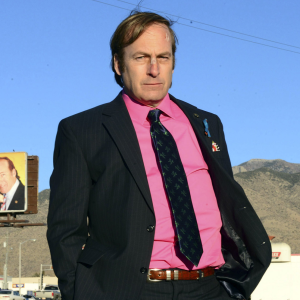
Just when fans thought AMC had completely exhausted the world of chemistry teachers turned meth cooks and high school dropouts with a tendency to overuse vulgarities, the hopes of fans across the country, were answered. The infamous “Breaking Bad” series may be over, but that is not to say there isn’t more to be seen. AMC has quite literally, done it again: “Better Call Saul” brings back some of the same characters, and, so far, it has delivered an intrigue like the one that captured the hearts and minds of so many “Breaking Bad” fans.
“Better Call Saul,” the prequel to the popular AMC show “Breaking Bad,” (also on Netflix in its entirety, ready for binge watching) premiered on Feb. 8, and though only four episodes have aired: I’m hooked.
The show chronicles the humble, rocky beginnings of the slick and sleazy Saul Goodman: “criminal lawyer,” in the words of “Breaking Bad”’s Jessie Pinkman. And to say his start in the practice of law was humble might be an overstatement.
In the opening scene of episode 1 (highly reminiscent of “Breaking Bad”), old-time music plays and a black and white flash-forward ensues. Audiences see Jimmy McGill (Bob Odenkirk), who is known to “Breaking Bad” fans as Saul Goodman, working at a Cinnabon in a mall. With a perfectly groomed handle-bar mustache and long sideburns, Jimmy works diligently but seems paranoid. The eerie music playing in the background combined with the black and white scene is nothing less than nerve-racking, and for a moment it was though the audience was back at “Los Pollos Hermanos.” Vince Gilligan, the show’s creator, certainly hasn’t lost his careful eye for the piece-by-piece, scrambled plot revelations that made “Breaking Bad” addicting in more ways than one.
But “Better Call Saul” isn’t only notable for its cinematographic techniques, which include long clips of subtle inaction combined with short bursts of intense, often frightening action that illuminate the nuanced meaning of the inaction. The show also features the dry, dark and sometimes heartbreaking sense of humor that makes the unbelievable aspects of the storyline that much more believable.
Jimmy McGill is a poor, struggling public defender with a crooked past that we learn eventually leads him to his brother, mentor and former lawyer Chuck McGill, who now insists that Jimmy do “good work first, and then the clients will come.” But having a shoebox for an office/house in the back of a Chinese nail salon sheds light on Jimmy’s dire financial situation. Just as Walter White couldn’t resist the idea of cold, hard cash, the sense that Walter’s road from “White to Heisenberg” may mirror Jimmy’s transition from McGill to Goodman permeates the show. His future corruption is brought about by past circumstances.
And to make it all the more exciting, in addition to Bob Odenkirk as Jimmy, Gilligan has also brought back some other characters from “Breaking Bad,”(though I won’t reveal them here). In that respect, the show is intriguing and exciting, but also potentially predictable. Gilligan recognizes that “Better Call Saul” has to be its own show; but, the ability to distinctly discern between the two will definitely be a conscious struggle for Gilligan and his writers as it must be tempting to re-do what garnered “Breaking Bad” its success. And the similarities thus far are striking not simply in characters reappearing, but also the style of the filmmaking and acting. However, with only four episodes out so far it already is safe to say that “Better Call Saul” will continue to pull in its audience despite its relationship to “Breaking Bad,” because of its own unique perspective with a new main character who proves to be worlds away from Walter White in many ways, while freakishly similar in others. It will be the pointed differences between the shows that will capture audiences. The places where “Better Call Saul” diverges from “Breaking Bad” may be what ultimately will allow the show to enter a league of its own.
But one aspect the audience surely hopes will remain constant is the uncannily realistic portrayal of humanity. A chemistry teacher’s transformation into a meth cook is as unbelievable as a criminal turned lawyer, and yet through superb writing and thoughtful acting such a realm of reality isn’t so far out of reach. So as long as “Better Call Saul” keeps raising important questions about the human experience, its audience will stay intrigued, and most importantly, wanting more.
“Better Call Saul” airs Mondays at 10/9c on AMC. Episode 5, “Jello,” is set to air March 2.














